
Maasai Mara, also sometimes spelled Masai Mara and locally known simply as The Mara, is a large national game reserve in Narok, Kenya, contiguous with the Serengeti National Park in Tanzania. It is named in honour of the Maasai people, the ancestral inhabitants of the area, who migrated to the area from the Nile Basin. Their description of the area when looked at from afar: "Mara" means "spotted" in the local Maasai language, because of the short bushy trees which dot the landscape.
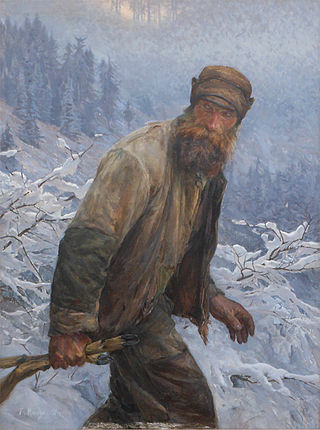
Poaching is the illegal hunting or capturing of wild animals, usually associated with land use rights. Poaching was once performed by impoverished peasants for subsistence purposes and to supplement meager diets. It was set against the hunting privileges of nobility and territorial rulers.
Amboseli National Park, formerly Maasai Amboseli Game Reserve, is a national park in Loitoktok District in Kajiado County, Kenya. It is 39,206 ha (392.06 km2) in size at the core of an 8,000 km2 (3,100 sq mi) ecosystem that spreads across the Kenya-Tanzania border. The local people are mainly Maasai, but people from other parts of the country have settled there attracted by the successful tourist-driven economy and intensive agriculture along the system of swamps that makes this low-rainfall area, average 350 mm (14 in), one of the best wildlife-viewing experiences in the world with 400 species of birds including water birds like pelicans, kingfishers, crakes, hamerkop and 47 raptor species.
The Born Free Foundation is an international wildlife charity that campaigns to "Keep Wildlife in the Wild". It protects wild animals in their natural habitat, campaigns against the keeping of wild animals in captivity and rescues wild animals in need. It also promotes compassionate conservation, which takes into account the welfare of individual animals in conservation initiatives. Born Free also creates and provides educational materials and activities that reflect the charity's values.

Garamba National Park is a national park in the north-eastern Democratic Republic of the Congo covering nearly 5,200 km2 (2,000 sq mi). It is among Africa's oldest parks and was designated a World Heritage Site by UNESCO in 1980 for its protection of critical habitat for northern white rhinoceroses, African elephants, hippopotamuses, and giraffes. Garamba National Park has been managed by African Parks in partnership with the Institut Congolais pour la Conservation de la Nature since 2005.

The International Fund for Animal Welfare (IFAW) is one of the largest animal welfare and conservation charities in the world. The organization works to rescue individual animals, safeguard populations, preserve habitat, and advocate for greater protections. Brian Davies founded IFAW. IFAW was instrumental in ending the commercial seal hunt in Canada. In 1983 Europe banned all whitecoat harp seals products. This ban helped save over 1 million seals. IFAW operates in over 40 countries.

Environmental issues in Kenya include deforestation, soil erosion, desertification, water shortage and degraded water quality, flooding, poaching, and domestic and industrial pollution.
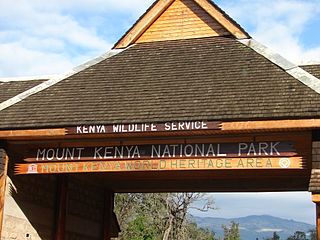
Kenya Wildlife Service (KWS) is a state corporation under the Ministry of Tourism and Wildlife established by an act of Parliament; Wildlife Conservation and Management Act CAP 376, of 1989, now repealed and replaced by the Wildlife Conservation and Management Act, 2013. At independence, the Government of Kenya committed itself to conserving wildlife for posterity with all the means at its disposal, including the places animals lived, forests and water catchment areas.
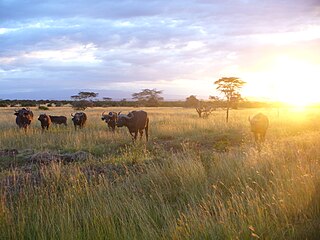
The wildlife of Kenya refers to its fauna. The diversity of Kenya's wildlife has garnered international fame, especially for its populations of large mammals. Mammal species include lion, cheetah hippopotamus, African buffalo, wildebeest (Connochaetes), African bush elephant, zebra (Equus), giraffe (Giraffa), and rhinoceros. Kenya has a very diverse population of birds, including flamingo and common ostrich.
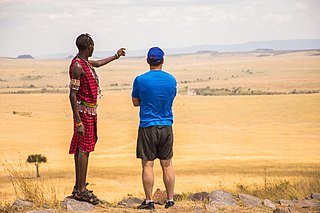
Tourism in Kenya is Kenya's third largest source of foreign exchange revenue, following diaspora remittances and agriculture. The Kenya Tourism Board is responsible for maintaining information about tourism in Kenya.
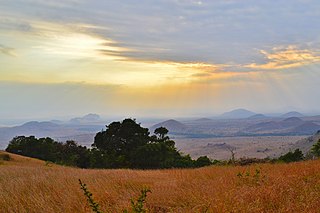
The Chyulu Hills is a mountain range in Makueni County in southeastern Kenya. It forms a 100-kilometre-long volcanic field in an elongated northeast–southwest direction. Its highest peak is 2,188 metres high.
Tusk Trust is a British non-profit organisation set up in 1990 to advance wildlife conservation across Africa. The charity funds the protection of African elephant, African rhinoceros and African lion, along with many other threatened species across Africa. Tusk’s mission is to amplify the impact of progressive conservation initiatives across Africa.

The International Elephant Foundation (IEF) is a non-profit 501(c)(3) corporation. Formed by individuals and institutions, IEF is dedicated to the conservation of African and Asian elephants worldwide.
The Wildlife Conservation Network (WCN) is a United States-based 501(c)(3) non-profit organization that protects endangered wildlife by supporting conservationists in the field who promote coexistence between wildlife and people. WCN does this by providing its partners with capital, strategic capacity-building services, training, and operational support. WCN has been given a top rating amongst wildlife conservation charities, with a four star rating on Charity Navigator.

The Sheldrick Wildlife Trust (SWT) operates an orphan elephant rescue and wildlife rehabilitation program in Kenya. It was founded in 1977 by Dame Daphne Sheldrick to honor her late husband, David Sheldrick. Since 2001, it has been run by their daughter, Angela Sheldrick.
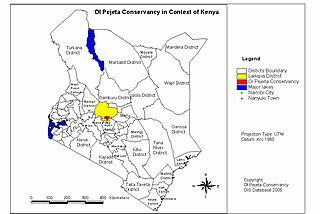
The Ol Pejeta Conservancy is a 360 km2 (140 sq mi) not-for-profit wildlife conservancy in Central Kenya's Laikipia County. It is situated on the equator west of Nanyuki, between the foothills of the Aberdares and Mount Kenya. The Ol Pejeta Conservancy works to conserve wildlife, provide a sanctuary for great apes, and generate income through wildlife tourism and complementary enterprises for re-investment in conservation and community development.
Jim Justus Nyamu, of Nairobi, Kenya, is an elephant research scientist and activist against poaching and trade in ivory. Nyamu is the executive director at the Elephant Neighbors Center (ENC) and is leader of the movement, Ivory Belongs to Elephants. He has also held positions at the African Conservation Centre and Kenya Wildlife Service. The ENC is a grass-roots collaborative and participatory research organization focused on enhancing the capacity of communities living with wildlife to promote interlinkages between species and their habitats.

Satao was one of Kenya's largest African elephants. He was known as a tusker because his tusks were so long that they almost touched the ground. The Tsavo Trust announced that Satao was killed by poachers using a poisoned arrow on 30 May 2014.
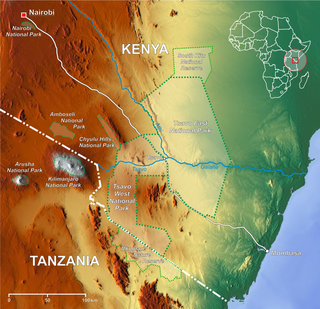
The Tsavo Trust is a non-profit wildlife conservation organisation, which covers Tsavo East National Park, Tsavo West National Park, and Chyulu Hills National Park in Kenya. The trust was founded by Nzioki Wa Makau and Richard Moller who is chief executive officer and an experienced bush pilot. The started aim of the trust is the protection of wildlife, especially African elephants, and the reduction of the ivory trade. In June 2014, the Tsavo Trust came into the international spotlight when it announced the death of Kenya's iconic and most well-known elephant, Satao, killed by an ivory poacher with a poisoned arrow.
The Tsavo Conservation Area is a complex of protected and other wildlife areas in southern Kenya and north-eastern Tanzania. It is composed of Tsavo East National Park, Tsavo West National Park, Chyulu Hills National Park, South Kitui National Reserve, ranches in Galana, Taita, Kulalu and Amboseli and adjacent private and communal lands. Bordering Mkomazi National Park in Tanzania, the Tsavo Conservation Area comprises an area of around 42,000 km2, of which over 25,000 km2 is protected. The protected portion in Kenya represent almost half of the country's protected areas.













